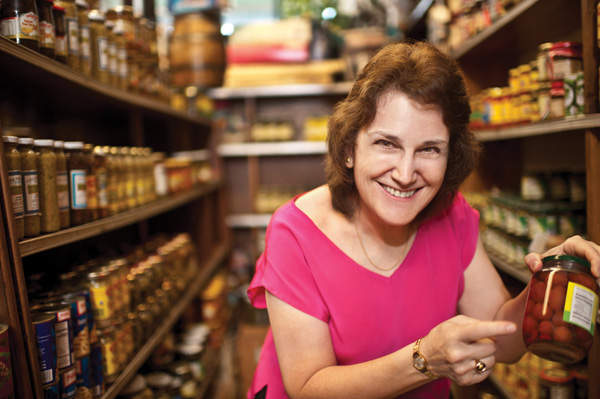Human History Through Food
"This entire book is an appetizer,” writes culinary historian Linda Civitello ’71 in the third edition of her book Cuisine and Culture: A History of Food and People, originally published by John Wiley & Sons in 2003. So it’s not surprising that in conversation, Civitello unveils a smorgasbord, leaping from topic to topic like a hungry diner flipping the lids off buffet serving dishes.

When we meet at Tara’s Himalayan Cuisine on Venice Boulevard in Los Angeles, Civitello opens with a story about the restaurant’s tandoor oven, detailing how, as the oven was heated for the first time, the owners kept the interior plastered with wet spinach for several days and nights so the clay would not crack. She then segues into discussing her appearance on fellow Vassar grad (class of ’84) Andrew Zimmern’s Bizarre Foods show, evincing distaste for exotic meats (“If it tastes like chicken, just eat chicken!” she says in exasperation). Civitello rhapsodizes about squash blossoms for 10 golden minutes, tells the story behind her commercial ice cream production certificate, and admits to being a supertaster for whom the faintest whiff of cayenne registers as tongue-numbing burn. She speaks just as readily about how inspired she was by Barbara Ketcham Wheaton’s Savoring the Past, a transcendent gastronomic history of France.
Civitello exhales a deep breath from across the table. “I’m a historian. Pull a thread. It could lead anywhere.”
In fact, Cuisine and Culture ranges widely across continents, from prehistory to the present, as it surveys human history through the lens of food. Civitello divided the book into courses instead of chapters, with threads leading to such lessons as the popularity of New World foods in Europe during the 17th century to the origins of chop suey.
Throughout Cuisine and Culture, Civitello emphasizes how identity is “intensely bound up with food.” A Neapolitan-American born in Connecticut, Civitello grew up with what she describes as an “insular, medieval” resistance to mainstream American foods. At Vassar, in addition to studying food peripherally in her anthropology classes, Civitello discovered “exotic” fare like Jell-O molds, lyonnaise potatoes, Boston brown bread, and boysenberry cobbler. She enjoyed popcorn on dorm movie nights and hit the local Howard Johnson’s for fried clams.
These experiences were revelatory to her, but her family saw the larger 1970s food revolution in America as a big joke.
“They discovered salad!” Civitello gasps in mock shock. Pizza and other southern Italian specialties remained primary at home. And it’s no wonder, Civitello explains: In late-19th-century Naples, even the palace boasted a pizza oven.
Civitello left behind a career in teaching to pursue a doctorate in history at the University of California, Los Angeles. She’s working to complete her dissertation on the history of baking powder, which will form the basis for The Baking Powder Wars, a book to be published in 2015 by University of Illinois Press.
As a culinary historian, Civitello is fascinated by the ways in which historical movements and events have dramatically shaped changes in the world’s food traditions: how Europe’s hunger for spices in the 15th century led to a frenzy of seafaring explorations; how the cow became sacred in India; and even how a little women’s college on the Hudson River 72 miles north of New York City happened to produce the first known written recipe for fudge (see page 41). In all of her work, Civitello seeks an alternative to standard histories of the world, leavening the ordinary with her impressive culinary research.
Andrew Simmons is a writer, teacher, and musician living in Los Angeles. He has written for Gastronomica, the New York Times, the Believer, and Slate.
